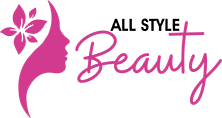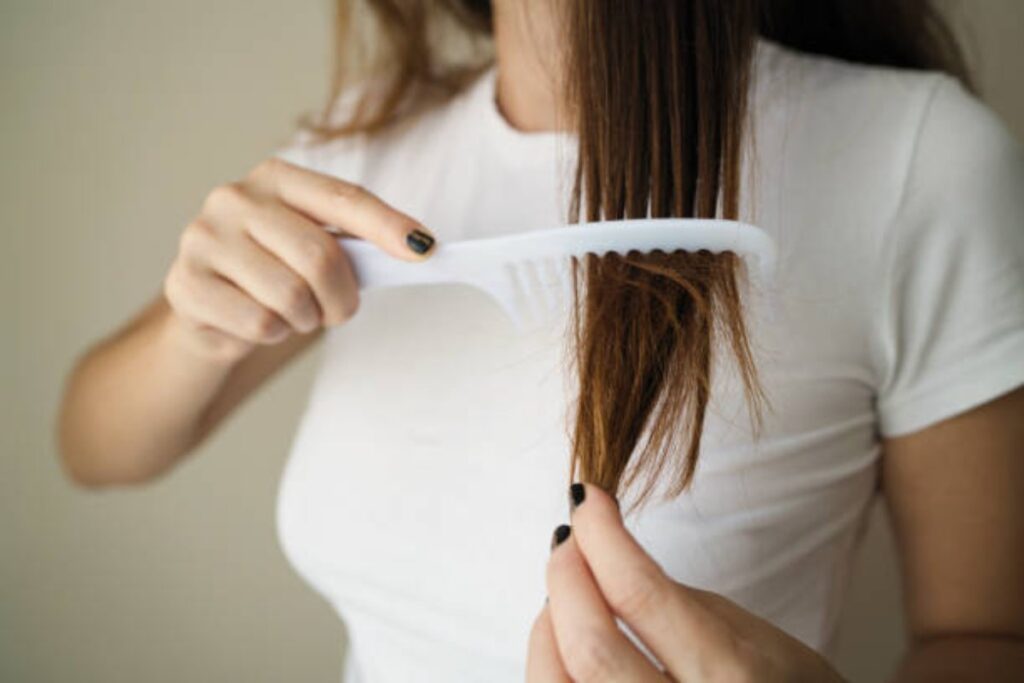Are you tired of staring at your hairbrush and seeing more strands than you’d like? Or maybe you’ve noticed your once luscious locks looking a bit thinner than they used to? If you’re wondering how to stimulate hair growth, you’re not alone. Lots of people are on the hunt for ways to give their hair a boost.
The good news is there are plenty of options out there for hair growth stimulation. From lifestyle changes to medical treatments, there’s no shortage of ways to try to get your hair growing faster and fuller. In this article, we’ll take a look at some of the most popular methods people use to stimulate hair growth.
Lifestyle Changes for Hair Growth
Before we jump into the more heavy-duty interventions, let’s talk about some simple lifestyle changes that can help with hair growth stimulation. These are things you can start doing right away, without a prescription or a big investment.
Eat a Healthy Diet
Your hair is complete up of proteins, so it makes sense that what you eat can affect its health. To give your hair the structure blocks it needs to grow, focus on a diet rich in protein, vitamins, and minerals. Some key nutrients for hair health include:
- Biotin (found in eggs, nuts, and whole grains)
- Vitamin C (in citrus fruits and green greens)
- Vitamin D (from sunlight and fatty fish)
- Iron (in red meat, spinach, and lentils)
- Omega-3 fatty acids (in fly-fish, flaxseed, and chia seeds)
Eating a stable diet with plenty of these hair-healthy foods can help create an environment where your hair can thrive.
Reduce Stress
We all know stress is bad for our overall health, but did you know it can also contribute to hair loss? When we’re stressed, our body produces cortisol, a hormone that can push hair follicles into a resting phase, causing hair to fall out.
To keep your pressure levels in check, try incorporating some stress-busting activities into your routine. This could be things like:
- Exercise (even a daily walk can help)
- Meditation or deep breathing
- Journaling
- Spending time with friends and loved ones
- Engaging in a hobby you enjoy
By managing your stress, you’re creating a better environment for your hair (and the rest of you!) to be healthy.
Be Gentle with Your Hair
If you’re wondering what stimulates hair growth, sometimes it’s less about what you do and more about what you don’t do. Many common hair care practices can actually damage your hair and impede growth. To be kind to your strands, try to:
- Avoid heat styling when possible, or use the lowest heat setting
- Don’t brush your hair when it’s wet (that’s when it’s most vulnerable to breakage)
- Use a wide-toothed comb to detangle, preliminary at the ends and working up to the roots
- Avoid constricted hairstyles that pull on your hair (think tight ponytails, buns, or braids)
- Use a silk or satin pillowslip to reduce friction while you sleep
By treating your hair gently, you can avoid the kind of damage that can lead to breakage and slower growth.
Medical Treatments for Hair Growth
If lifestyle changes alone aren’t giving you the hair growth results you want, there are some medical interventions that can help stimulate hair growth. These naturally require a prescription from a doctor.
Minoxidil & Finasteride
Minoxidil, commonly known as Rogaine, is an over-the-counter topical medication used to stimulate hair growth by widening blood vessels and opening potassium channels. It is most effective for individuals under 40 in the early stages of hair loss and comes in liquid or foam forms, usually applied twice daily. Results can take up to six months, with potential side effects including scalp irritation and unwanted hair growth on the face and hands.
Finasteride, marketed as Propecia, is a prescription medication available only for men, taken daily to block DHT production, a hormone related to hair loss. Like minoxidil, it may take six months to see results, and possible side effects include decreased libido, erectile dysfunction, and reduced semen volume.
Low-Level Laser Therapy (LLLT)
LLLT, also known as red light therapy, is a non-invasive action that uses low-level lasers to stimulate hair growth. The exact mechanism of how it works isn’t fully understood, but it’s thought to increase blood flow to the scalp and stimulate cellular metabolism.
LLLT is typically administered via a special comb, helmet, or cap that’s used for several minutes a day. It’s a relatively new treatment option, and more research is needed to fully understand its effectiveness and long-term safety.
The Impact of Ultrasound on Hair Growth
In recent years, researchers have been exploring the potential of ultrasound therapy as a way to stimulate hair growth. Ultrasound uses high-frequency sound waves to enter the skin and stimulate the tissues beneath.
Studies have exposed that ultrasound therapy can increase blood circulation in the scalp, which brings more nutrients and oxygen to the hair follicles. This, in turn, may help to stimulate hair growth. Ultrasound is also thought to have an anti-inflammatory effect, which could be beneficial for hair growth as inflammation in the scalp is linked to some forms of hair loss.
Ultrasound therapy for hair growth is typically administered in a scientific setting by a trained
professional. The treatment is non-invasive and painless, and there are no known side effects. However, more research is needed to determine the optimal frequency and duration of treatments for best results.
If you’re interested in exploring ultrasound therapy for hair growth, talk to a dermatologist or hair loss specialist. They can assess your individual situation and determine if ultrasound therapy might be a good option for you.
Natural Remedies for Hair Growth
If you prefer a more natural approach to hair growth stimulation, there are several home remedies that some people swear by. Keep in mind that the effectiveness of these methods is often anecdotal, and they may not work for everyone.
Scalp Massage
Massaging your scalp can help rouse blood flow to your hair follicles, which brings nutrients and oxygen to help hair grow. You can give yourself a scalp massage by applying gentle pressure with your fingertips and moving them in small circles.
For an extra boost, try massaging your scalp with a few drops of vital oils like lavender, peppermint, or rosemary diluted in a carrier oil. Some studies have shown that these essential oils promote hair growth.
Onion Juice
Onion juice has long been a folk medicine for hair loss. It’s thought to work because onions contain high levels of sulfur, which is a building block of hair. Onion juice may also have anti-bacterial properties that can help with scalp health.
To try this remedy, blend a few onions and strain out the juice. Apply the juice to your scalp, let it sit for 15 minutes to an hour, then shampoo as usual. Just be warned – your hair might smell like onions for a while afterward!
Green Tea
Green tea is packed with antioxidants, which can help protect your hair from damage. One of these antioxidants, EGCG, has been shown in some studies to stimulate hair growth.
To use green tea for your hair, try brewing two bags in one cup of water, letting it cool, and applying it to your scalp. Leave it on for an hour, then rinse. You can also drink green tea for the potential hair benefits and other health perks.
Conclusion
So there you have it – a rundown of some of the most popular ways people try to stimulate hair growth. Whether you opt for lifestyle changes, medical treatments, ultrasound therapy, natural remedies, or a combination, the key is to be patient and consistent. Hair growth is a slow process, and it can take months to start seeing results.
If you’re concerned about hair loss or your hair growth efforts aren’t panning out, don’t hesitate to talk to a doctor or dermatologist. They can help classify the cause of your hair loss and recommend the most effective action choices for you.
In the meantime, remember that your hair doesn’t define you. Whether your locks are thick and flowing or thin and fine, you’re still the same awesome person inside. Treat your hair with kindness, but don’t let it steal your shine. Here’s to happy, healthy hair – and an even happier, healthier you!

